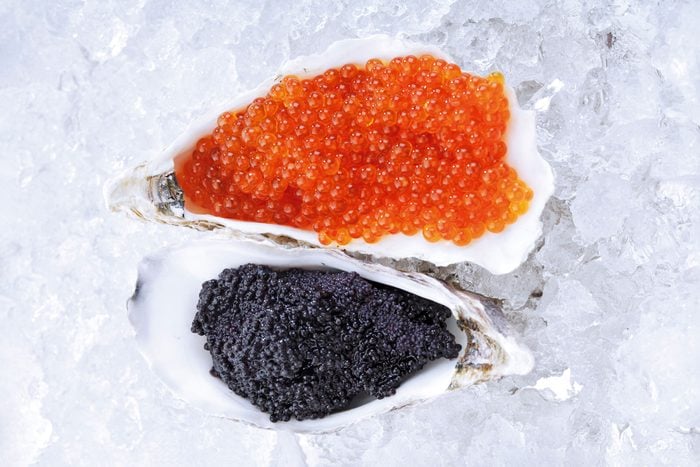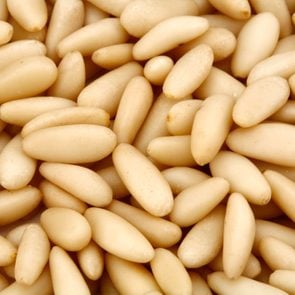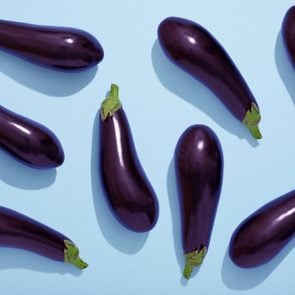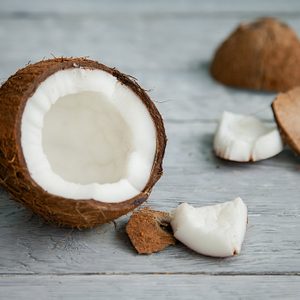What Is Caviar, Exactly?
Updated: Aug. 03, 2023

If you've ever wondered what caviar actually is, you're in the right place. Here's the scoop on those tiny fish eggs and why they're so expensive.
Whether you’re a bona fide foodie or you simply want to expand your knowledge of food facts trivia, there are probably a few things you’ve wondered about over the years. After all, even if you eat certain foods, you might not know what’s actually in them. For example, do you know what sashimi is, or wasabi, for that matter? And while we’re on the subject of fish, let’s talk caviar. Sure, you know it’s a delicacy and that a tiny tin of the good stuff might cost more than your mortgage for the month, but what is caviar, exactly? And why is it so expensive?
Those shiny little pearls have a long, storied history, and there’s definitely a reason they cost a pretty penny. You also might not realize that there are many types of caviar, and they come in all different colors, flavors, textures, and price points. Here’s the lowdown on this expensive entrée accoutrement and everything you need to know about it, including where to find ethically sourced varieties.
What is caviar made of?
Caviar is made from the fish roe (eggs) of the female sturgeon. Traditionally, the term caviar referred only to the roe from wild sturgeon caught in the Caspian and Black Seas. This was the most prized type of caviar, but due to overfishing in the region in the 1980s and ’90s, caviar is now produced around the world. While you can find more affordable alternatives to caviar made from trout or salmon eggs, true caviar is from sturgeon, either caught in the wild or farmed. Black caviar is arguably the most well-known type of caviar, but red, gold, and brown varieties are also available. Of course, you’ll find highest-quality caviar in fine specialty shops, but you can find it in some big-box stores as well. In fact, caviar is one of the most expensive things you can buy at Costco.
Caviar vs. fish roe: What’s the difference?
Just about every marine animal—from sea urchins and fish to squid and shrimp—is capable of producing roe. Fish roe, or fish eggs, are generally found in the form of unfertilized egg masses inside a female marine animal’s ovaries. Fish roe can be used as an uncured, cooked, or raw and salted product, or it could be transformed into caviar.
Caviar refers to a specific style of preparation of sturgeon roe. In other words, all caviar is a type of fish roe, but not all fish roe is caviar. “The term caviar is acceptable for roe caught from non-sturgeon species, but it has to be preceded with the common or usual name of the fish,” adds Michael Gelman of Marky’s Caviar. “For example, if you are talking about caviar from a salmon (which is not a species of sturgeon), it would have to be labeled as salmon caviar.”
Plain fish roe has a less rich and less robust flavor than caviar, so it is often used as a sushi topping or as an ingredient in a more complex dish. Caviar, on the other hand, is typically the unadulterated star of a dish, or a spoon-served snack in its own right.
Types of caviar
While many varieties of caviar exist, three of the best-known varieties are Sevruga, Ossetra, and Beluga.
- The least expensive form of caviar, Sevruga is the most common variety. Sevruga caviar looks like small, black, somewhat clear pearls, its insides are juicy, and it has a smooth and buttery taste. Despite its relative affordability, Sevruga is often considered to have the most rich and intense flavor, with a clean and fresh finish.
- Ossetra is the most popular caviar in the world partly because, while still expensive, it tends to be the most affordable form of high-end caviar. The firm, juicy, gold and brown pearls are known for their briny, nutty, and rich flavor.
- And now for the most expensive type of caviar: Beluga. Incredibly rare, it commands nearly $200 to $350 per ounce. Its eggs are large, dark gray, and well-separated, and they come from the wild Beluga sturgeon. However, since popularity of this caviar led to the endangerment of Beluga sturgeon populations, the United States banned the importation of this type of caviar in 2008. As a result, some forms of caviar are actually illegal in the United States.
What does caviar taste like?
As mentioned above, each type of caviar has its own distinct flavor, but it also has its own unique texture. That said, there are some similarities across the board, and most caviar starts out with a salty, briny burst of flavor that tastes faintly of fish or oysters and lingers a bit after you eat it. Other types of roe, however, can have more of an umami flavor.
Though caviar is now considered one of the most exclusive and most desirable luxury foods in the world, this wasn’t always the case. Until the once-plentiful eggs (that were actually once served as bar food!) became scarce around 1910, people hated eating caviar.
How to enjoy caviar
There is no single correct way to enjoy caviar, but in terms of how it’s typically served, less is more. Caviar is best enjoyed all by itself, eaten right off a spoon, but it can also be served as a garnish, spread, or as an appetizer with unsalted crackers or blini (thin, savory mini pancakes). Caviar is also often served as a sort of setup, with chopped eggs, sour cream, and crème fraîche, often all piled on top of a blini.
Typically served as an hors d’oeuvre and presented in small, half-teaspoon portions, it is typically paired with a dry sparkling wine or ice-cold vodka (premium Russian vodka is the most traditional pairing); these beverages help bring out the caviar’s distinct and salty sea flavors. Regardless of how you enjoy caviar, don’t rush the eating process, and whatever you do, do not just chew it! Caviar’s texture and flavor should be savored, so place the caviar on your tongue, spread it around your mouth, and let your tongue feel the individual beads before swallowing. Of course, if you’re eating the caviar with a cracker, you’ll have to chew it, but in that case, take small bites and enjoy every bit of it.
How to store caviar
Like most seafood dishes, caviar is best eaten fresh. Caviar often comes in a jar or tin, which should be refrigerated even before it’s opened. Make sure to check the label, though, since different types of caviar and containers require different storage temperatures. They also last different amounts of time unopened, usually anywhere from two to six weeks. Experts recommend storing caviar between 25 and 30 degrees Fahrenheit, but since that’s colder than most refrigerators, you’ll want to put it in coldest part of your fridge (typically in a back corner).
Once the caviar has been opened, it should be tightly resealed and immediately stored in the coldest part of the refrigerator, where it will last about three days. Unopened caviar can be refrigerated for about two weeks. Given its high price tag, caviar is definitely not something you want sitting around and going bad.
Why is caviar so expensive?
Caviar is so expensive because it is not a readily and widely available product. Sturgeon can take more than 10 years to mature, and decades of overfishing have made them even more sought after and difficult to source. Additionally, a high degree of skill and experience is required to extract the roe, not to mention converts it into top-grade caviar. During the curing process, the eggs are removed from the fish’s ovaries, then chilled, rinsed, weighed, salted, chilled again, drained, and blotted dry before being packed. Much of this work must be done by hand in order to keep the eggs intact.
Like any other food product, there are different degrees of luxury when it comes to caviar, which can cost between $50 and $3,000 per ounce. Is caviar worth the money? Well, if you enjoy it and you can afford it, then yes. If not, then it probably isn’t worth the splurge and you could make vegetarian versions of “poor man’s caviar” using eggplant or black beans, which also make yummy toast toppings.
Sustainably sourced caviar
In the late 1800s, the demand for caviar grew so quickly that overfishing threatened sturgeon populations and many fisheries eventually collapsed. Overfishing, pollution, and dams that closed off spawning grounds and destroyed sturgeon habitat all contributed to the decrease in their populations, and in 1917, California banned commercial and sport fishing of white sturgeon.
Like many luxury products, sustainability and ethical sourcing are not always part of a company’s sourcing and production strategy, but some companies are making it a priority. California Caviar Company, for example, is a global leader in the production and distribution of environmentally safe, sustainably farmed caviar. Not only do they supply top restaurants and Michelin-star chefs around the world, but they also sell directly to the public, so they’re a great place to find a huge variety of sustainably produced caviar. Marky’s also offers sustainable caviar options, including American Beluga caviar that’s harvested from fish bred at Sturgeon Aquafarms in Florida.
Now that you know the answer to the question “What is caviar?” and what to look for when buying it, turn your attention to some decidedly less highbrow foods and find out exactly what’s in pork rinds and hot dogs.
Sources:
- U.S. Department of Justice: “Caviar Prosecutions”
- Monterey Bay Aquarium: “White Sturgeon”
- Michael Gelman, Marky’s Caviar
- Money Inc.: “The 10 Most Expensive Types of Caviar in the World”
- Esquire: “Caviar Is Affordable, Sustainable, and Really Good on Fries”
- IFT: “How Caviar Is Processed”
- Barron’s: “How to Judge Sustainable Caviar”
- Food & Wine: “Where to Get Your Sustainable Caviar Game On”



